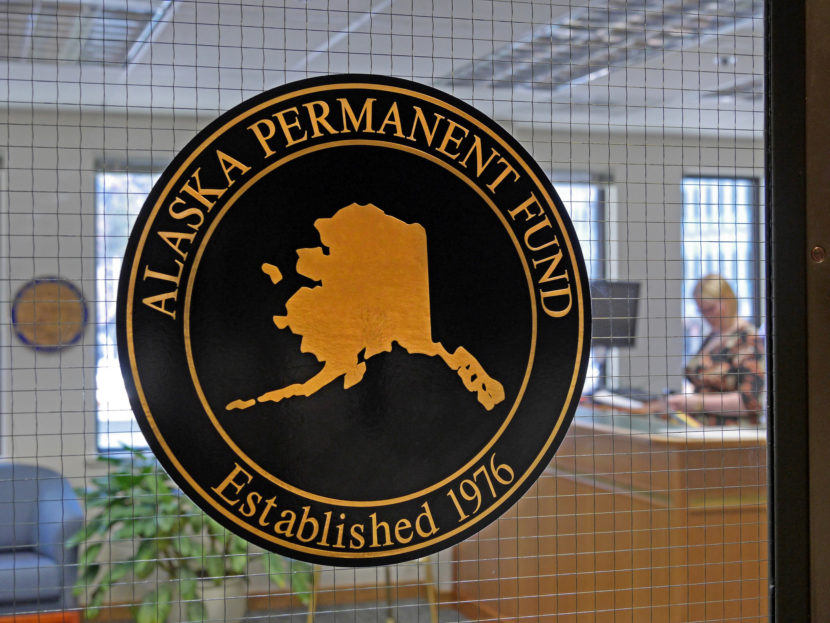
Up until 2016, Alaska had the highest credit rating Moody’s Investment Service had to offer.
But, global oil prices crashed, and Alaska’s budget followed suit. In less than a year and a half, Alaska went from one of Moody’s highest rated states, to one of its lowest.
Credit rating agencies, like Moodys, look at the $2.5 billion hole in the state’s budget, the energy-dependent economy, and how heavily the government leaned on savings to balance the budget — which all looks bad. But, recently, Moody’s changed their outlook.
A few months ago, Alaska’s professional number-crunchers went out on a mission.
“We met with all of the credit rating agencies and tried to help them kind of understand what’s happening in Alaska the assets that are available,” Department of Revenue Commissioner Sheldon Fisher said.
A few weeks later, Moody’s updated Alaska’s credit rating. In late November, Moodys changed its outlook on Alaska from negative, to stable.
For the state, and some cities in it — that’s good news.
“It means that we actually spend less,” Fisher said. “If they were to have downgraded us it would have cost us more to have borrowed money in the future.”
But, what happened? Why did Moody’s analysts change their opinions? Oil prices are still pretty low. The state is still spending more than it makes. And, it hasn’t gotten an income or sales tax or any other way to bring a bunch of new money in.
Dan Seymour is a bond analyst for Moodys and he’s the lead analyst for Alaska. He said the state’s credit rating is still really good.
“The AA3 rating is an extremely high rating,” Seymour said.
It’s the fourth out of the 21 on the scale.
“[That] indicates virtually zero risk of defaults on the bonds by the entity that has borrowed the money, which is to say that Alaska is rated higher than the vast majority of borrowers,” Seymour said.
But, most states have great credit. And, when you compare Alaska to other states, it has one of the worst credit ratings.
Seymour said when energy prices crashed, it hurt a lot of other states like West Virginia and Oklahoma and New Mexico. Each of these states relies pretty heavily on energy related fees or taxes to fund their budgets.
“I don’t think any other state compares to Alaska in its lack of economic diversity or its budgetary reliance on revenue from a single industry,” Seymour said.
But, it’s not all bad news. Seymour said Alaska been spending billions more than the state brings in. But, when the earnings from the Permanent Fund are factored in — that’s the money the fund makes from investments — the budget hole, the gap between what the state spends and what it makes, disappears.
Because, while Alaska’s struggled to balance its budget, the Permanent Fund has been doing well. It’s up to more than $62 billion.
“Five years ago or so it was more like $40 billion dollars,” Seymour said. “So because of the continued deposits into the fund and the strong performance of the fund it’s gotten big enough that there’s now a clear path to that fund generating enough income for the state to live on.”
To be clear, Seymour said it isn’t that Moody’s just realized that Alaska has this earnings reserve account and that changed its outlook. There have been other signs of progress. In the last couple of years, the state has cut its budget and oil prices have gone up.
But, spending money from the Permanent Fund Earnings Reserve isn’t exactly easy. The legislature has never used money from that account to cover government operations.
But, there’s nothing in state law barring the legislature from using it, and the Governor has proposed to do just that. But, some people see that as endangering Alaskans dividends — the money comes from the same account. That’s a giant political hurdle to overcome.
There’s some evidence that it could happen, though. Last year, both the House and Senatepassed bills that would have tapped into those reserves. And, the government has capped dividends for the last two years.
That legislative history is one of the things, Fisher said, that helped build the state’s case to the credit rating agencies.
Seymour said there’s another issue putting pressure on legislators to use the earnings reserve account. The state has been relying on savings for three years to balance its budget. And, it’s running out of other savings accounts to tap into. The $13.8 billion earnings reserve is the next logical place to go.
“If the legislature wants to keep spending money it’s going to have to find it somewhere in the earnings account of the Permanent Fund is the most likely source for that,” Seymour said.
Spending from that earnings reserve account is still tapping into savings to balance the budget. And, both Seymour and Fisher said there’s always the chance that something could go wrong. Like, the stock market could crash and the Permanent Fund accounts could lose a lot of money in a short period of time.
But, Seymour says Moody’s doesn’t think the Permanent Funds investments are always going to make money. Rather, that some years it will make money and some years it will lose money and that it will average out and be able to plug the hole in the state’s budget.
Rashah McChesney is a photojournalist turned radio journalist who has been telling stories in Alaska since 2012. Before joining Alaska's Energy Desk , she worked at Kenai's Peninsula Clarion and the Juneau bureau of the Associated Press. She is a graduate of Iowa State University's Greenlee Journalism School and has worked in public television, newspapers and now radio, all in the quest to become the Swiss Army knife of storytellers.




